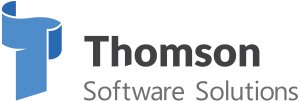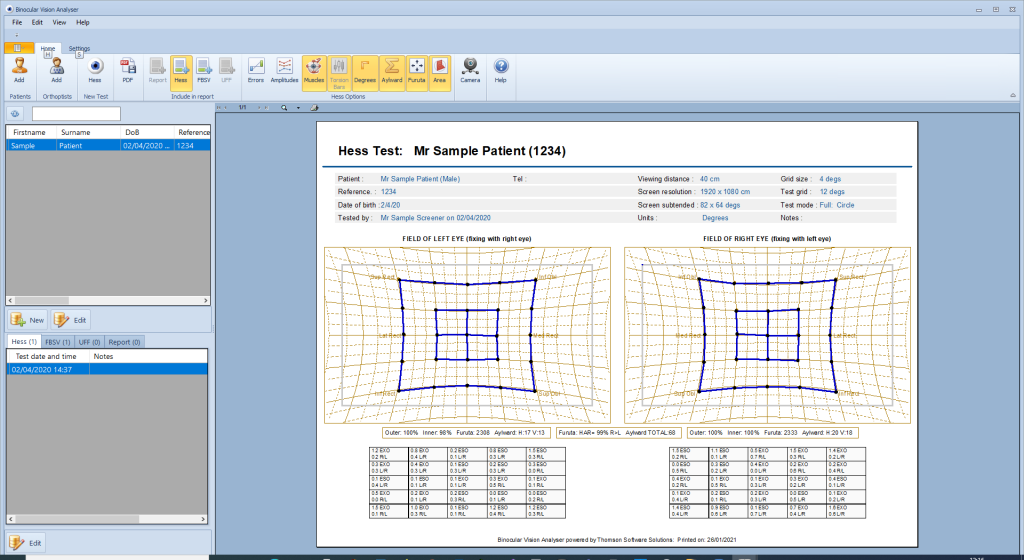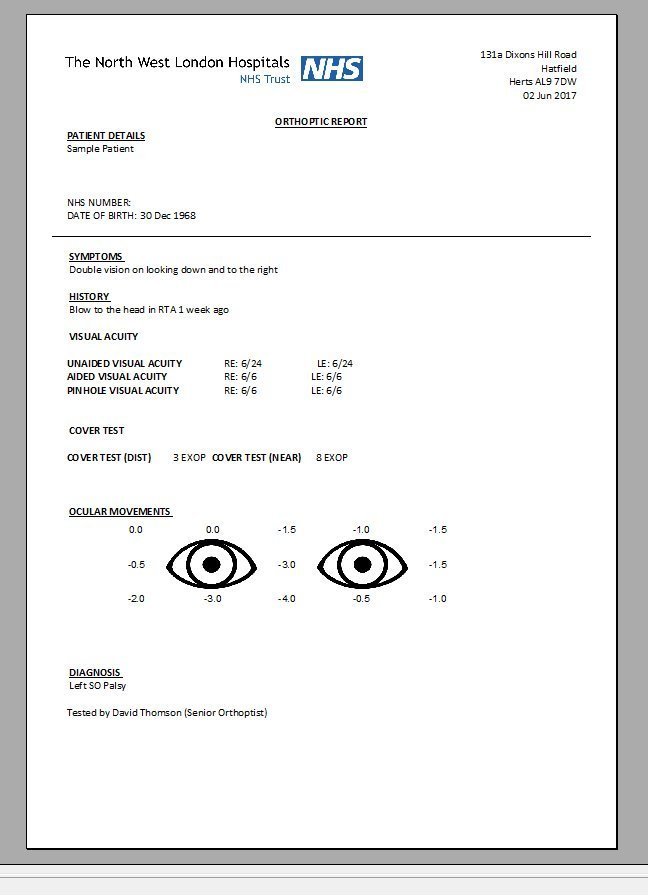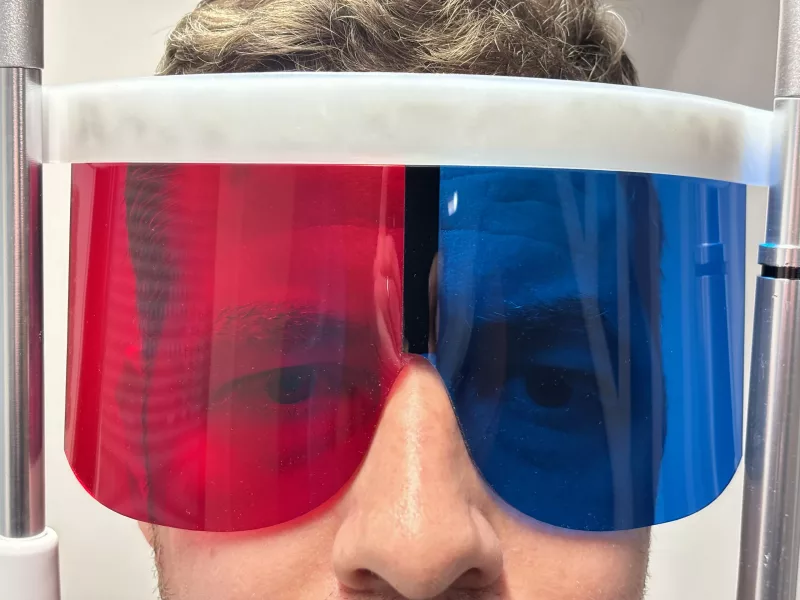The Uniocular Field of Fixation Test is very similar to the Field of Binocular Vision test except a Landolt C or Tumbling E us used instead of a spot.
With their head on the chin/forehead rest, the patient views an optotype (Landolt C or Tumbling E) with one eye. The size of the E is adjusted so it is just above the acuity threshold. The optotype is slowly scrolled from the centre of the field to the periphery along a series of radial lines at 15 degree intervals.
The patient reports when the stimulus goes “blurred” and they can no longer resolve the optotype (this being the point of maximum excursion of the eye resulting in the optotype moving off the fovea). This point is then automatically recorded and the next radial is explored. The Orthoptist views a test control screen as shown opposite.
A manual override allows the Orthoptist complete control of the test allowing specific areas of the field to be explored and retested.
NOTE: The extent of the field that can be measured is limited to the angular subtense of the screen (typically +/- 30 degrees vertically and +/-50 degrees horizontally with a 49” TV), Therefore, this test is only of value for those whose UFF is limited to within these bounds. A bowl or arc perimeter is required in order to assess the full extent of the normal UFF.







